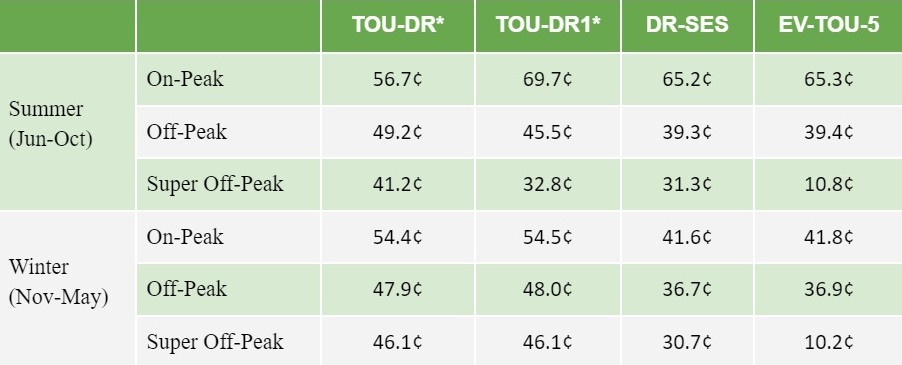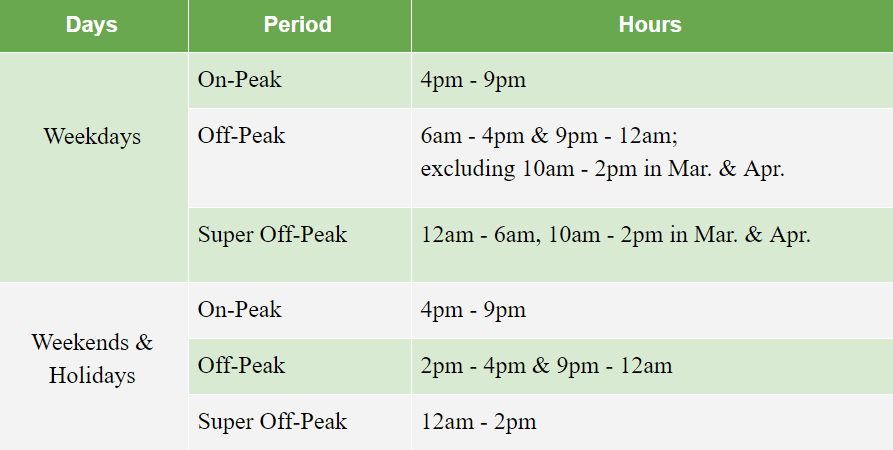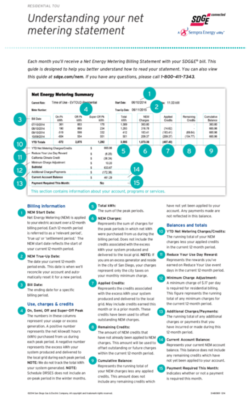Net energy metering, or “NEM”, is a special billing arrangement that provides credit to customers with solar PV systems for the full retail value of the electricity their system generates. Under NEM, the customer’s electric meter keeps track of how much electricity is consumed by the customer, and how much excess electricity is generated by the system and sent back into the electric utility grid. Over a 12-month period, the customer has to pay only for the net amount of electricity used from the utility over-and-above the amount of electricity generated by their solar system (in addition to monthly customer transmission, distribution, and meter service charges they incur).
At any time of the day, a customer’s solar system may produce more or less electricity than they need for their home or business. When the system’s production exceeds the customer demand, the excess energy generation automatically goes through the electric meter into the utility grid, running the meter backwards to credit the customer account. At other times of the day, the customer’s electric demand may be higher than their solar system is producing, and the customer relies on additional power needs from the utility. Switching between solar system’s power and the utility grid power is instantaneous-customers never notice any interruption in the flow of power.
NEM is your gateway to optimizing the rate of return on your solar investment.
- Allows customers to zero-out their bills for the year.
- Credits customer accounts at full retail rates.
- Accurately captures energy generated and consumed.
- Allows the customer to pay their bill once per year.
- Technical and sales training
- NEM agreement is good for 20 years.
Excess monthly retail credits will not be paid out at the end of the year, nor will they rollover to the next year. However, customers that generate a net surplus of energy at the end of a twelve-month period can receive a payment for this energy under special utility tariffs. Check the tariff books for PG&E, SCE, or SDG&E for more information on net surplus generation rates. This is generally a small amount of money, on the order of a few cents per kWh.
Non-bypassable charges (NBCs) are per-kilowatt hour charges that are built into utility electric rates. They add up to approximately 1-3 cents per kWh and go towards funding energy efficiency, low-income customer assistance, and other related programs. These charges will apply to every kWh delivered by the utility to your home even if it offset by excess solar production.
If you receive gas service through your utility, that will henceforth be billed separately and will continue to be paid on a monthly basis.
Under the NEM agreement, your utility will continue to read your electric meter monthly and you will receive a monthly statement indicating the net amount of electricity you consumed or exported to the utility grid during that billing period. You have the option of paying the utility for your net consumption monthly, or settling your account every 12 months. This annual bill is called your “true-up” bill which occurs 12 months after your “PTO Date” (Permission to Operate). A sample of the Net Metering Summary page, which will be a new feature of your bill, is shown here.
Time-of-use is a rate plan in which rates vary according to the time of day, season, and day type (weekday or weekend/holiday). Higher rates are charged during the peak demand hours and lower rates during off-peak (low) demand hours. Rates are also typically higher in summer months than in winter months. All solar customers must be on a TOU rate schedule, however, they may choose ANY rate structure available to residential customers. The tables below illustrate some of the most popular rate structures and the time periods during which these rates apply.
Sungenia’s Recommendation: Although your ideal rate will depend on your unique lifestyle, almost all residences will find the most savings using TOU-DR. Feel free to contact us if you’re unsure of the rate that will best suit your home.

Except for EV-TOU-5, there is a minimum bill of .35 cents per day. *TOU-DR and TOU-DR1 rates are applicable up to 130% of baseline usage (approx. 390 kWh). Above that, an additional charge of 10.2 cents per kWh will apply.


